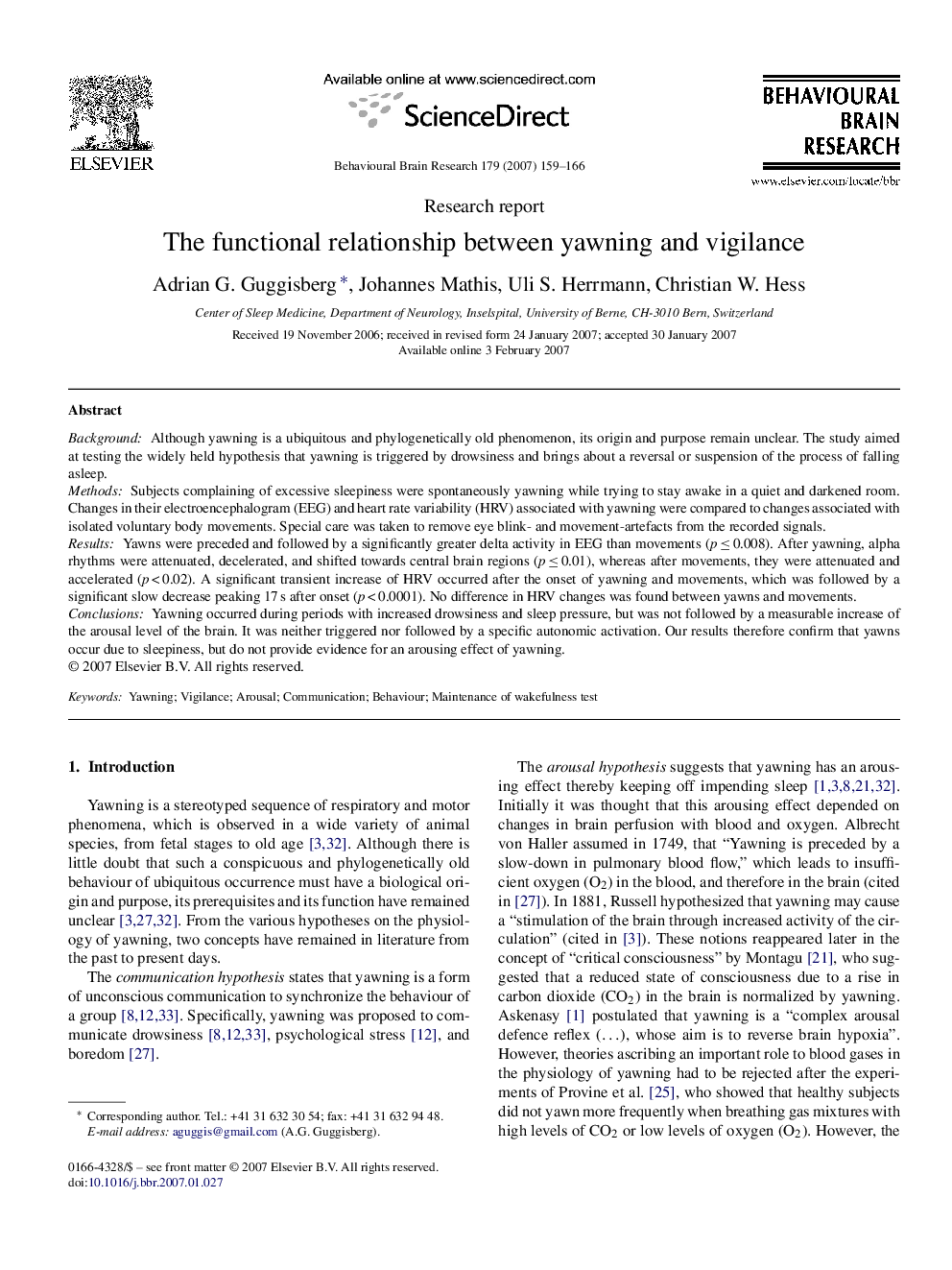| Article ID | Journal | Published Year | Pages | File Type |
|---|---|---|---|---|
| 4315784 | Behavioural Brain Research | 2007 | 8 Pages |
BackgroundAlthough yawning is a ubiquitous and phylogenetically old phenomenon, its origin and purpose remain unclear. The study aimed at testing the widely held hypothesis that yawning is triggered by drowsiness and brings about a reversal or suspension of the process of falling asleep.MethodsSubjects complaining of excessive sleepiness were spontaneously yawning while trying to stay awake in a quiet and darkened room. Changes in their electroencephalogram (EEG) and heart rate variability (HRV) associated with yawning were compared to changes associated with isolated voluntary body movements. Special care was taken to remove eye blink- and movement-artefacts from the recorded signals.ResultsYawns were preceded and followed by a significantly greater delta activity in EEG than movements (p ≤ 0.008). After yawning, alpha rhythms were attenuated, decelerated, and shifted towards central brain regions (p ≤ 0.01), whereas after movements, they were attenuated and accelerated (p < 0.02). A significant transient increase of HRV occurred after the onset of yawning and movements, which was followed by a significant slow decrease peaking 17 s after onset (p < 0.0001). No difference in HRV changes was found between yawns and movements.ConclusionsYawning occurred during periods with increased drowsiness and sleep pressure, but was not followed by a measurable increase of the arousal level of the brain. It was neither triggered nor followed by a specific autonomic activation. Our results therefore confirm that yawns occur due to sleepiness, but do not provide evidence for an arousing effect of yawning.
